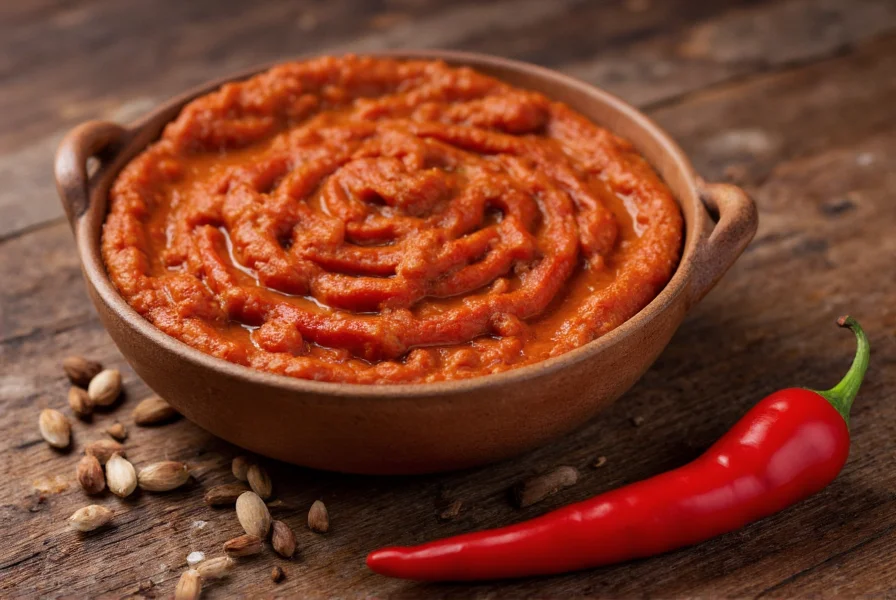For food historians and botanists, the question of where was chili originated has been thoroughly investigated through archaeological findings and genetic studies. The journey of chili peppers from their ancient homeland to global kitchens represents one of history's most remarkable culinary migrations.
The Ancient Origins of Chili Peppers
Scientific research points to Mesoamerica as the undisputed birthplace of chili cultivation. Excavations at archaeological sites in Mexico, particularly in the Tehuacán Valley, have uncovered chili remains dating back to 6000-5000 BCE. These findings provide concrete evidence of early chili domestication long before European contact.
Genetic studies of wild and cultivated Capsicum species confirm Mexico as the center of diversity for chili peppers. Researchers have identified multiple species of wild chilies still growing in Mexico today, including Capsicum annuum var. aviculare, considered the direct ancestor of domesticated varieties. This genetic diversity strongly supports Mexico as the primary origin point rather than other regions where chilies later spread.

Pre-Columbian Chili Cultivation
Long before Columbus arrived in the Americas, indigenous civilizations had developed sophisticated chili cultivation practices. The Maya and Aztec cultures incorporated chilies into nearly every aspect of their cuisine, medicine, and even religious ceremonies. Historical records from Spanish conquistadors describe extensive chili markets in Tenochtitlán (modern-day Mexico City), where dozens of varieties were traded.
Chili peppers served multiple purposes in ancient Mesoamerican societies:
| Use Category | Specific Applications |
|---|---|
| Culinary | Flavoring staple foods like maize, beans, and chocolate; preservation |
| Medicinal | Treating digestive issues, toothaches, and wounds |
| Economic | Traded as currency; used in tribute payments to rulers |
| Religious | Offerings to deities; purification rituals |
The Global Spread of Chili Peppers
The Columbian Exchange dramatically altered the trajectory of chili pepper history. When Spanish explorers encountered chilies in the Americas, they recognized their potential and transported them back to Europe. From there, Portuguese traders introduced chilies to Africa and Asia along maritime trade routes.
Remarkably, chili peppers integrated into Asian cuisines with astonishing speed. Within a century of European contact, chilies had become essential ingredients in Indian, Thai, and Chinese cooking—despite having no prior presence in these regions. This rapid adoption demonstrates the universal appeal of chili's distinctive flavor and heat.
Scientific Classification and Evolution
Botanically, chili peppers belong to the genus Capsicum within the nightshade family (Solanaceae). Five primary species were domesticated in the Americas:
- Capsicum annuum (includes bell peppers, jalapeños, cayenne)
- Capsicum frutescens (tabasco peppers)
- Capsicum chinense (habaneros, Scotch bonnets)
- Capsicum pubescens (rocoto peppers)
- Capsicum baccatum (aji peppers)
Genetic analysis reveals that Capsicum annuum, the most widely cultivated species globally, evolved from wild ancestors in northeastern Mexico. This scientific evidence of chili origin aligns perfectly with archaeological findings from the region.
Modern Chili Diversity
Today, chili peppers have diversified into thousands of varieties adapted to different climates and culinary preferences. While Mexico remains a center of chili diversity, countries like China, India, and Turkey now lead in global production. The journey from where was chili originated to its current worldwide distribution represents one of agriculture's most successful plant migrations.
Understanding the true origin of chili peppers helps us appreciate not just their culinary significance, but also the complex historical processes that shaped global food systems. The story of chili migration exemplifies how a single plant species can transform cuisines across continents while maintaining its essential character.
Frequently Asked Questions
Where exactly were chili peppers first cultivated?
Archaeological evidence shows chili peppers were first cultivated in what is now Mexico approximately 6,000 years ago. Excavations in the Tehuacán Valley have uncovered the oldest known domesticated chili remains, confirming Mexico as the primary center of origin for Capsicum annuum, the most common chili species.
How did chili peppers spread from America to other continents?
Chili peppers spread globally through the Columbian Exchange after Christopher Columbus's voyages. Spanish explorers brought chilies to Europe in the late 15th century, and Portuguese traders subsequently introduced them to Africa, India, and Southeast Asia along maritime trade routes. Within a century, chilies had integrated into many Asian cuisines despite having no prior presence in these regions.
What evidence supports Mexico as the origin of chili peppers?
Multiple lines of evidence confirm Mexico as the origin of chili peppers: archaeological findings of 6,000-year-old chili remains in the Tehuacán Valley; genetic studies showing Mexico as the center of diversity for wild Capsicum species; historical records from Spanish conquistadors describing extensive chili cultivation in Mesoamerica; and linguistic evidence from indigenous languages with ancient terms for chili varieties.
Were chili peppers present in Asia before European contact?
No, chili peppers were not present in Asia before European contact in the late 15th century. All historical and botanical evidence indicates that chilies originated exclusively in the Americas. The rapid integration of chilies into Asian cuisines after their introduction demonstrates how quickly they were adopted, leading many to mistakenly believe they had always been part of these culinary traditions.
Which chili species was first domesticated by humans?
Capsicum annuum was the first chili species domesticated by humans, with archaeological evidence dating back to 6000-5000 BCE in Mexico. This species includes many common varieties such as jalapeños, serranos, and bell peppers. Genetic studies confirm that C. annuum evolved from wild ancestors in northeastern Mexico, making it the earliest cultivated chili species in human history.











 浙公网安备
33010002000092号
浙公网安备
33010002000092号 浙B2-20120091-4
浙B2-20120091-4